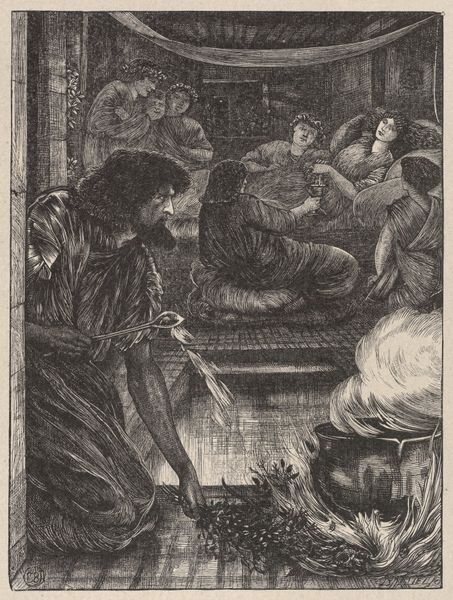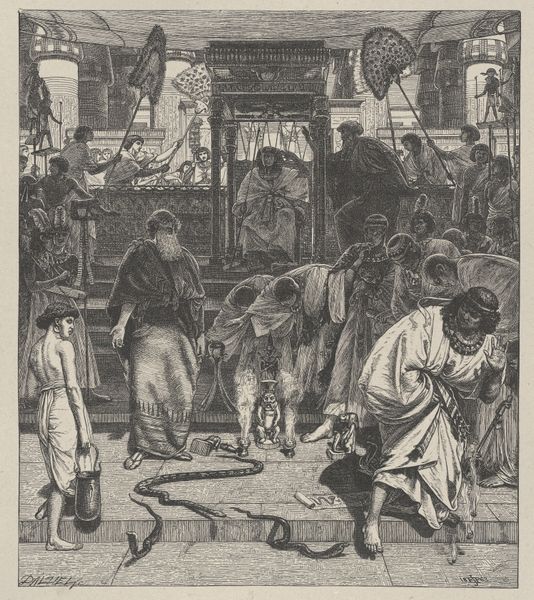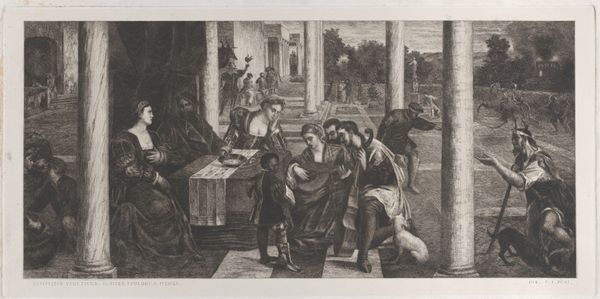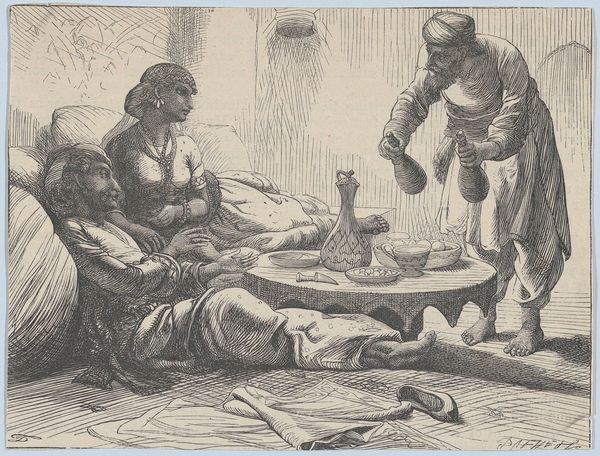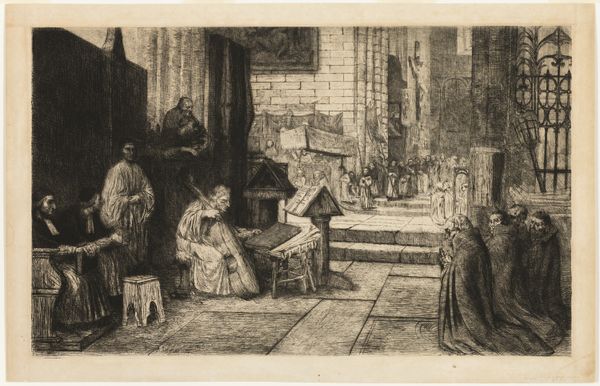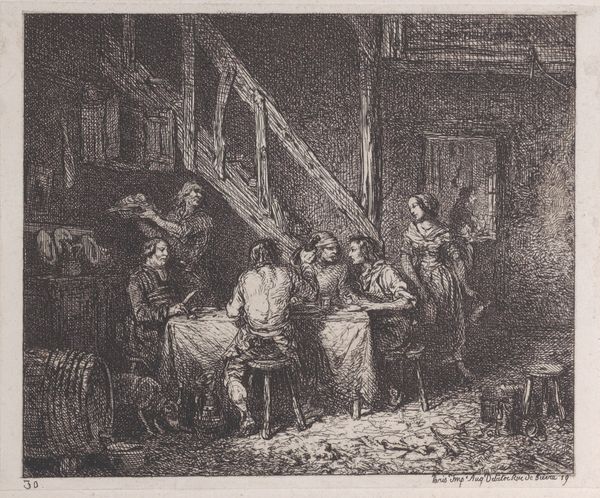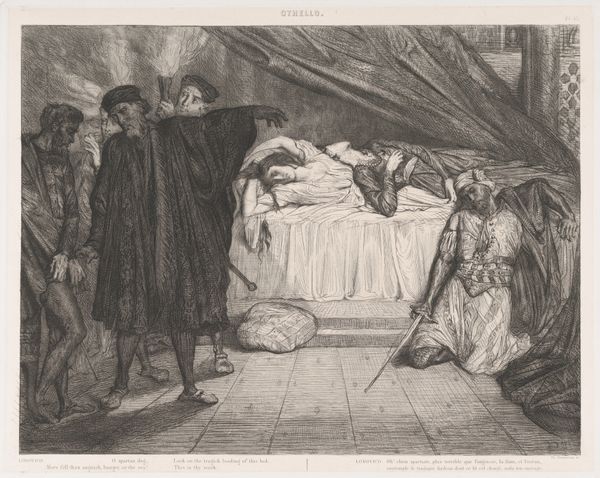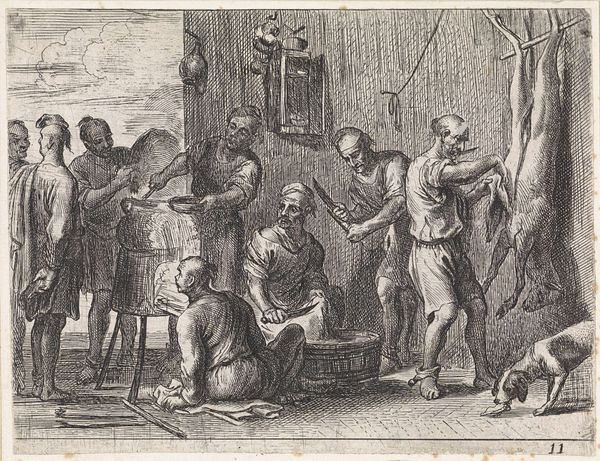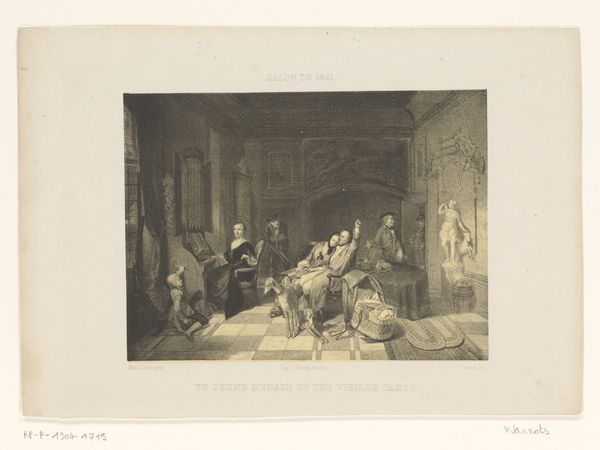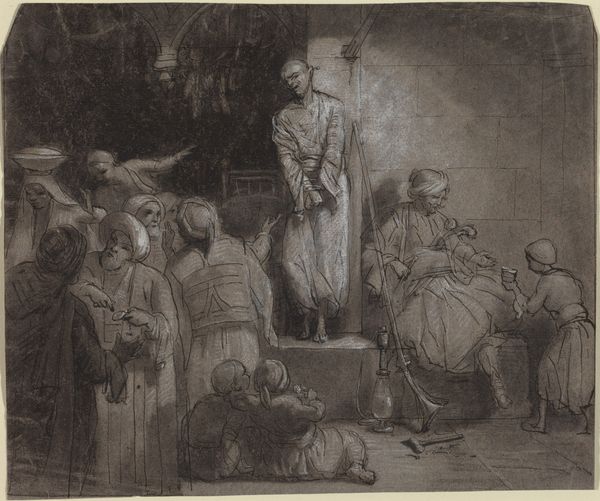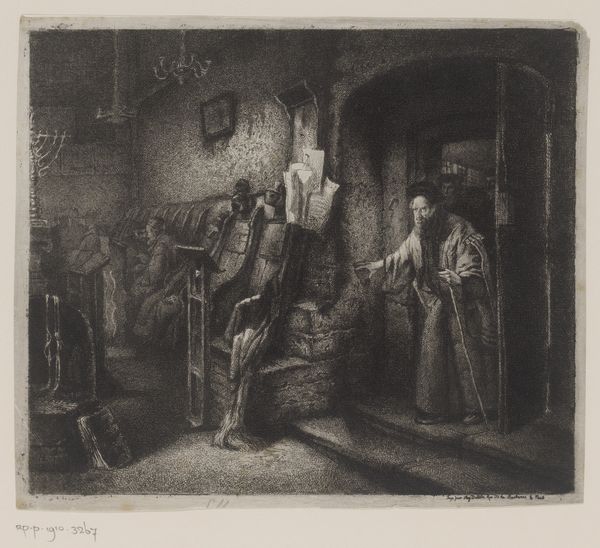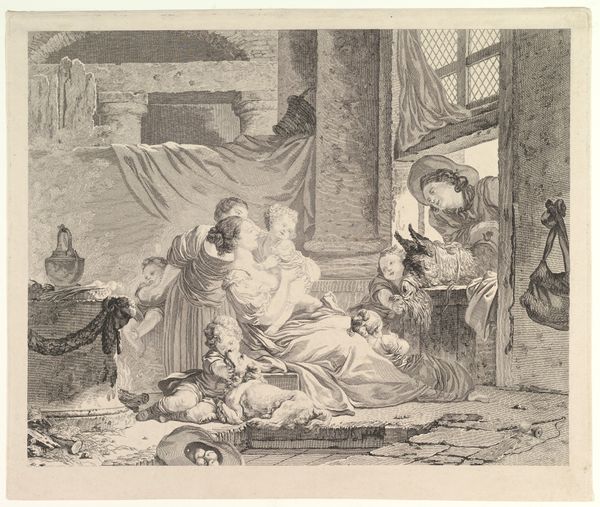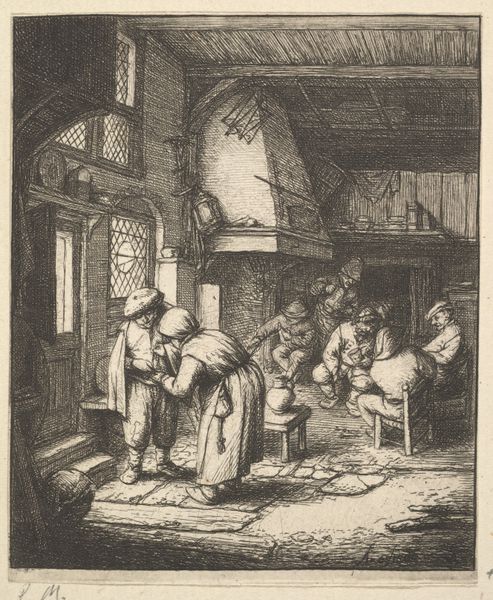
Joseph Before Pharoah, from "Dalziels' Bible Gallery" 1864 - 1881
0:00
0:00
drawing, print
#
drawing
#
narrative-art
# print
#
ancient-egyptian-art
#
figuration
#
ancient-mediterranean
#
men
#
history-painting
Dimensions: Image: 6 13/16 × 7 1/2 in. (17.3 × 19 cm) India sheet: 8 7/8 × 9 5/16 in. (22.5 × 23.7 cm) Mount: 16 7/16 in. × 12 15/16 in. (41.8 × 32.8 cm)
Copyright: Public Domain
Curator: This image is a print entitled "Joseph Before Pharaoh, from 'Dalziels' Bible Gallery,'" dating from between 1864 and 1881 and is currently held in the collection of the Metropolitan Museum of Art. The artist is Edward John Poynter. Editor: What strikes me is the artist's ability to convey such opulence with such limited tonal range. The texture of the columns, the rendering of light, the pattern in the king's garb - impressive. Curator: Absolutely. Dalziel Brothers, as prolific wood engravers, translated Poynter's original design into a medium accessible for mass consumption. Think about the socio-economic implications of reproducing biblical scenes for widespread dissemination! It underscores the era’s complex relationship with faith, labour and artistic production. Editor: A fascinating point! But within that mass production, we see an interesting composition. Poynter frames the figures with imposing architectural elements—the columns create depth, directing our eye towards the figures. It speaks volumes about hierarchy and power, achieved through form and structure. Curator: Indeed. And look closely at the details, they betray a class-based system that depends on both exploitation and artistry. What materials were readily accessible? Who benefited economically from this printing and distribution, and who did it exclude? The answers, in many ways, speak to the function and reception of the work in Victorian society. Editor: I appreciate your insights. Though, to shift our focus a bit, the central figures exude contrasting expressions of supplication and power. Poynter's use of line and shadow define these figures—the angle of their bodies, their facial expressions; this builds an atmosphere of narrative tension that is difficult to deny. Curator: Right. Consider how Poynter—through the Dalziel firm—aimed to popularize Biblical history. What cultural assumptions are woven into this act of 'artistic dissemination'? Is the story being served or manipulated through the act of representation and mass distribution? It leads one to wonder what other messages, both religious and societal, are also subtly embedded into it. Editor: You know, both perspectives are relevant in making meaning from artworks like this print. There’s the artist's hand in creating form, and how that intersects with Victorian era manufacturing. Curator: Precisely, one must acknowledge the material realities. Thanks for this visual and cultural discussion.
Comments
No comments
Be the first to comment and join the conversation on the ultimate creative platform.
